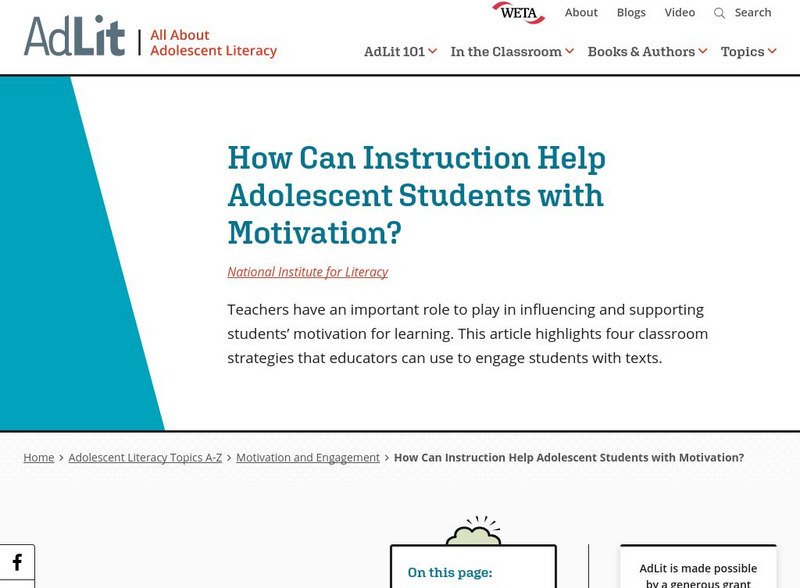AdLit
Ad lit.org: Explicit Comprehension Strategy Instruction
Use explicit strategy instruction to make visible the invisible comprehension strategies that good readers use to understand text. Support students until they can use the strategies independently. Recycle and re-teach strategies...
AdLit
Ad lit.org: Key Literacy Component: Text Comprehension
Text comprehension allows readers to extract or construct meaning from the written word. Students who misread words or misinterpret their meanings are at a disadvantage. Proper instruction can boost students' skills in this key area.
AdLit
Ad lit.org: Key Literacy Component: Fluency
Fluent readers can read text accurately, smoothly, and with good comprehension. Students who get bogged down in the mechanics of reading have trouble with this skill. With proper instruction, struggling readers can improve their fluency.
AdLit
Ad lit.org: Key Literacy Component: Decoding
Decoding is the ability to correctly decipher and identify a word from a string of letters. Students who struggle with decoding are at a disadvantage, but explicit instruction can help them learn this skill.
AdLit
Ad lit.org: Key Literacy Component: Writing
Students who don't write well aren't able to learn and communicate effectively. This article explains what good writing skills are and how to help struggling young writers gain those skills through proper instruction.
AdLit
Ad lit.org: Key Literacy Component: Morphology
Morphology describes how words are formed from building blocks called morphemes, the smallest unit of meaning in a word. Students who don't understand this structure have trouble recognizing, understanding, and spelling words. Find out...
AdLit
Ad lit.org: Key Literacy Component: Vocabulary
What's in a word? Mastery of oral and written vocabulary promotes comprehension and communication. Find out how proper instruction can help students who struggle with vocabulary.
AdLit
Ad lit.org: How Can Instruction Help Adolescent Students With Motivation?
Teachers have an important role to play in influencing and supporting students' motivation for learning. This article highlights four classroom strategies that educators can use to engage students with texts.









